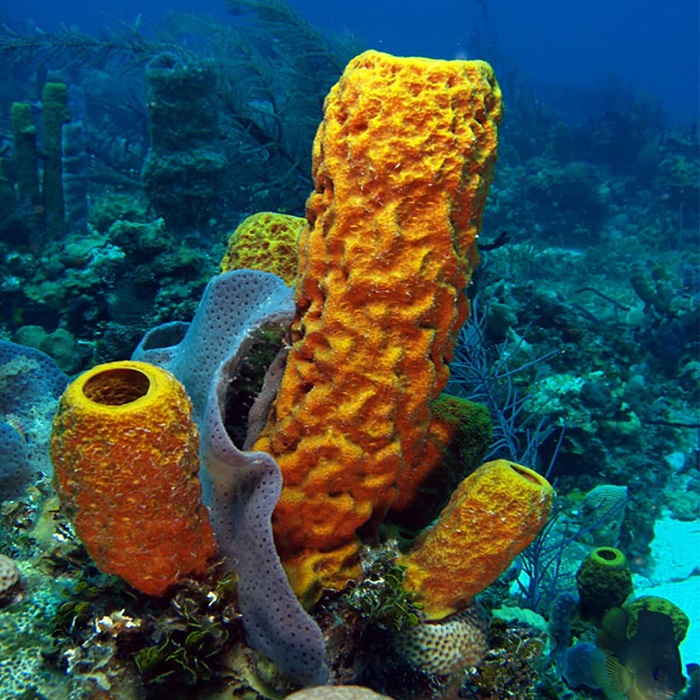The ocean, with its vast expanse and mysterious depths, harbors an array of fascinating creatures. Among these, the sea sponge stands out not just for its simplicity but for the profound secrets it holds. These unassuming organisms, often mistaken for plants or mere lumps on the ocean floor, are a testament to nature’s ingenuity and resilience.
Ancient Origins and Evolutionary Marvel
Sea sponges in the ocean belong to the phylum Porifera, a name derived from the Latin word “porus” (pore) and “ferre” (to bear). They are among the oldest living organisms on Earth, with fossils dating back over 600 million years. This places them well before the age of dinosaurs, indicating their incredible adaptability and resilience through Earth’s many climatic shifts and mass extinctions.
Structural Simplicity and Complexity
At first glance, sponges in the sea might seem rudimentary, lacking organs, nerves, and muscles. However, their structural simplicity belies a complex and efficient system of survival. Sea sponges are composed of a porous skeleton made from spongin (a collagen-like protein) and spicules (tiny, mineralized structures). This unique composition allows them to filter vast amounts of water, extracting oxygen and nutrients while expelling waste.
A single sea sponge can filter thousands of liters of water daily, playing a crucial role in maintaining marine ecosystem health. This filtration not only provides sponges with sustenance but also helps to clarify the water, benefiting other marine life.
Symbiotic Relationships and Chemical Warfare
Sea sponges are not solitary creatures; they host a multitude of microorganisms, forming intricate symbiotic relationships. These microorganisms can include bacteria, archaea, and even algae, contributing to the sponge’s nutrition, growth, and defense mechanisms. This symbiosis is a cornerstone of their survival strategy, allowing them to thrive in diverse environments, from shallow reefs to the deep sea.
In the competitive world of the ocean, ocean sea sponges have developed an arsenal of chemical defenses. They produce a wide array of bioactive compounds to deter predators and prevent the overgrowth of harmful bacteria and fungi. These compounds have caught the attention of scientists, leading to groundbreaking research in pharmaceuticals. Several sponge-derived compounds are being investigated for their potential in treating cancer, bacterial infections, and even viral diseases.
Ecological Importance and Conservation
Sea sponges play a vital role in marine ecosystems. By filtering water, they maintain the clarity and quality of their habitats, which benefits a wide range of marine organisms. They also provide habitat and shelter for various marine species, from tiny invertebrates to fish.
However, like many marine organisms, sea sponges face threats from human activities. Pollution, climate change, and destructive fishing practices can damage their fragile habitats. Conservation efforts are essential to protect these ancient creatures and the ecosystems they support.
Conclusion: A Marvel of Nature
Sea sponges, with their ancient lineage and unique biological characteristics, are a marvel of nature. Their ability to filter water, their symbiotic relationships, and their chemical defenses highlight the complexity hidden within their simple forms. As we continue to explore and understand the ocean’s depths, sea sponges remind us of the intricate and interconnected nature of life on Earth.
In protecting sea sponges, we not only preserve a piece of our planet’s history but also safeguard the health and diversity of marine ecosystems. Their secrets, still being uncovered by scientists, hold promise for future medical breakthroughs and deepen our appreciation for the wonders of the natural world.
